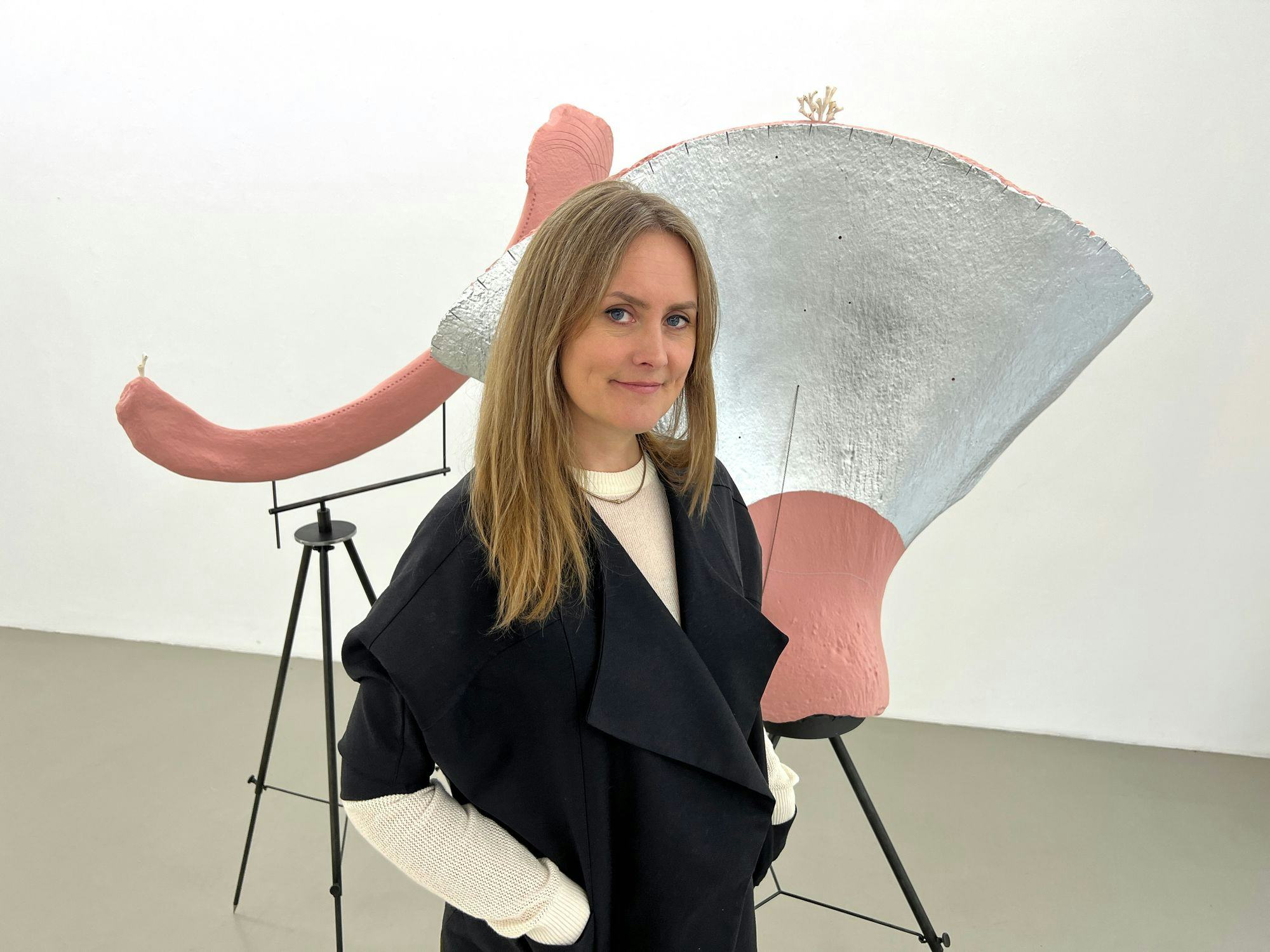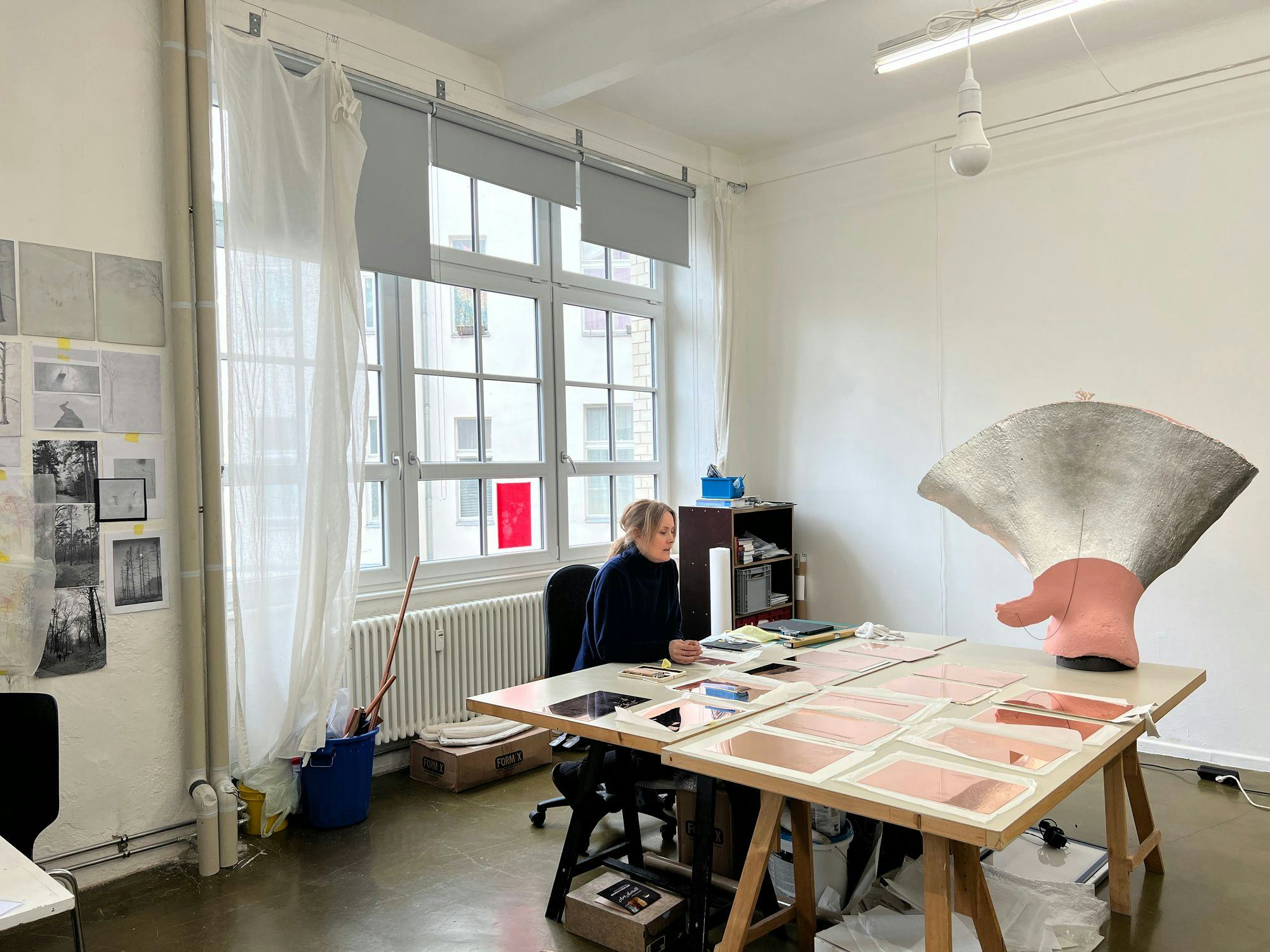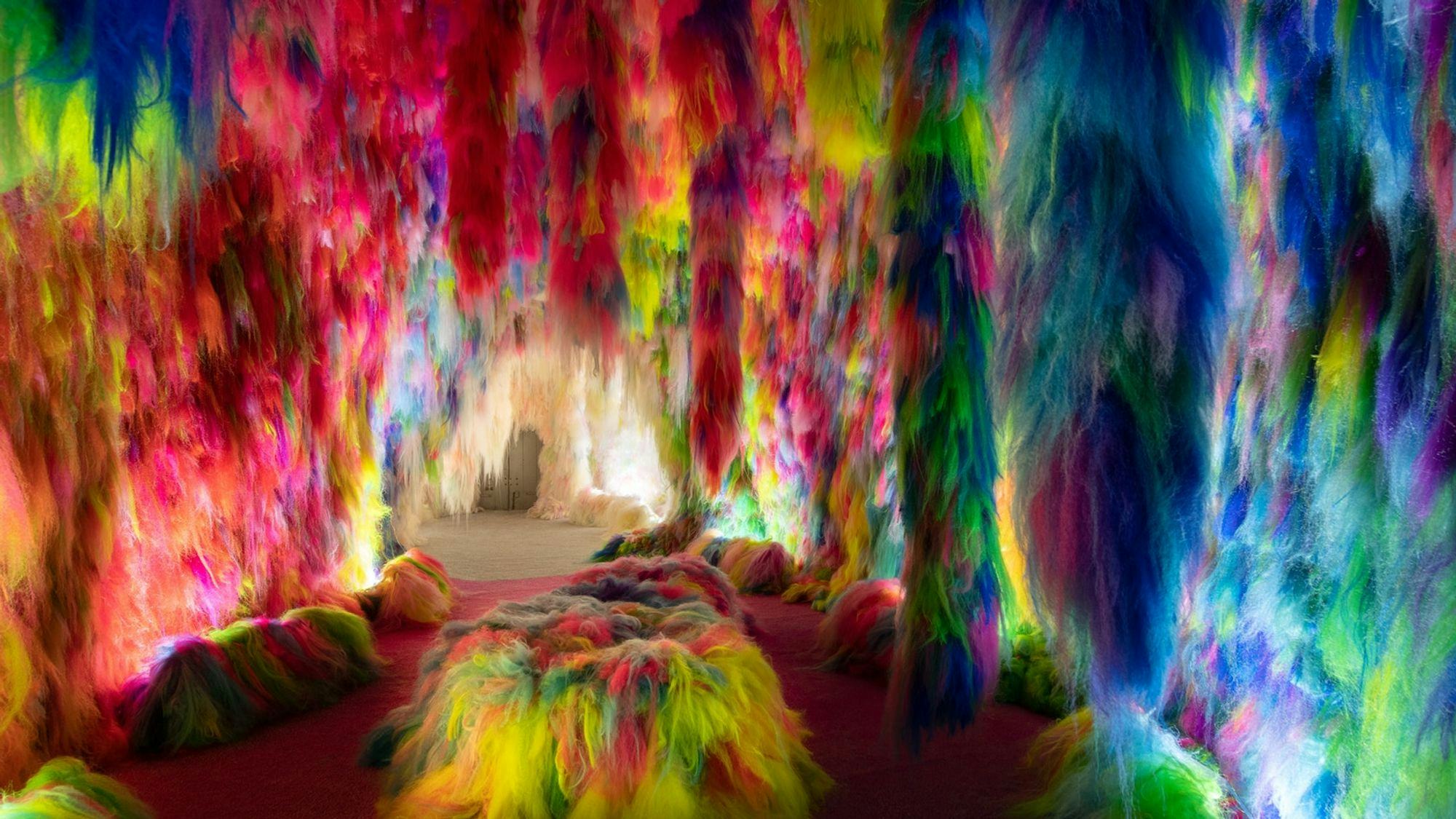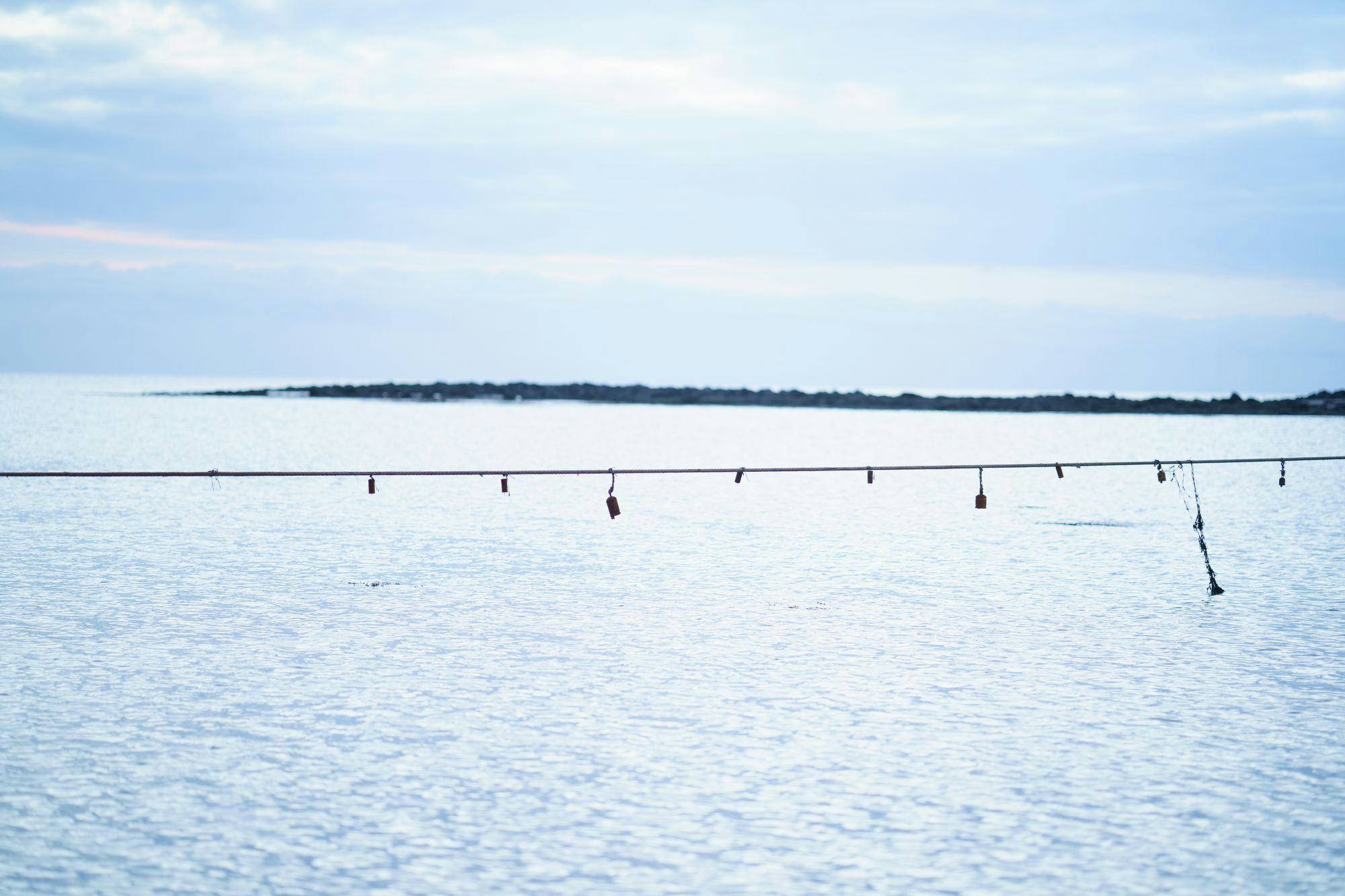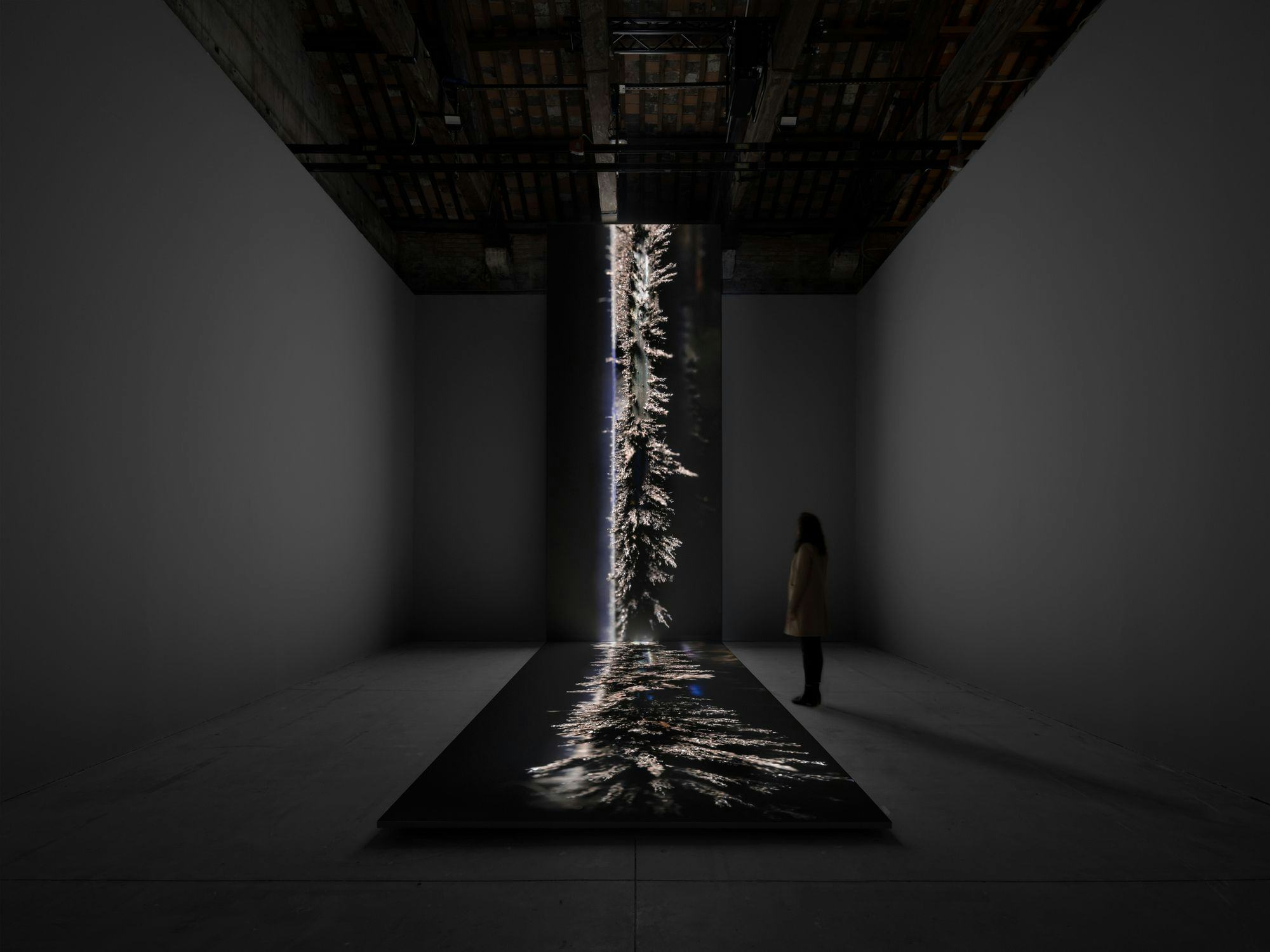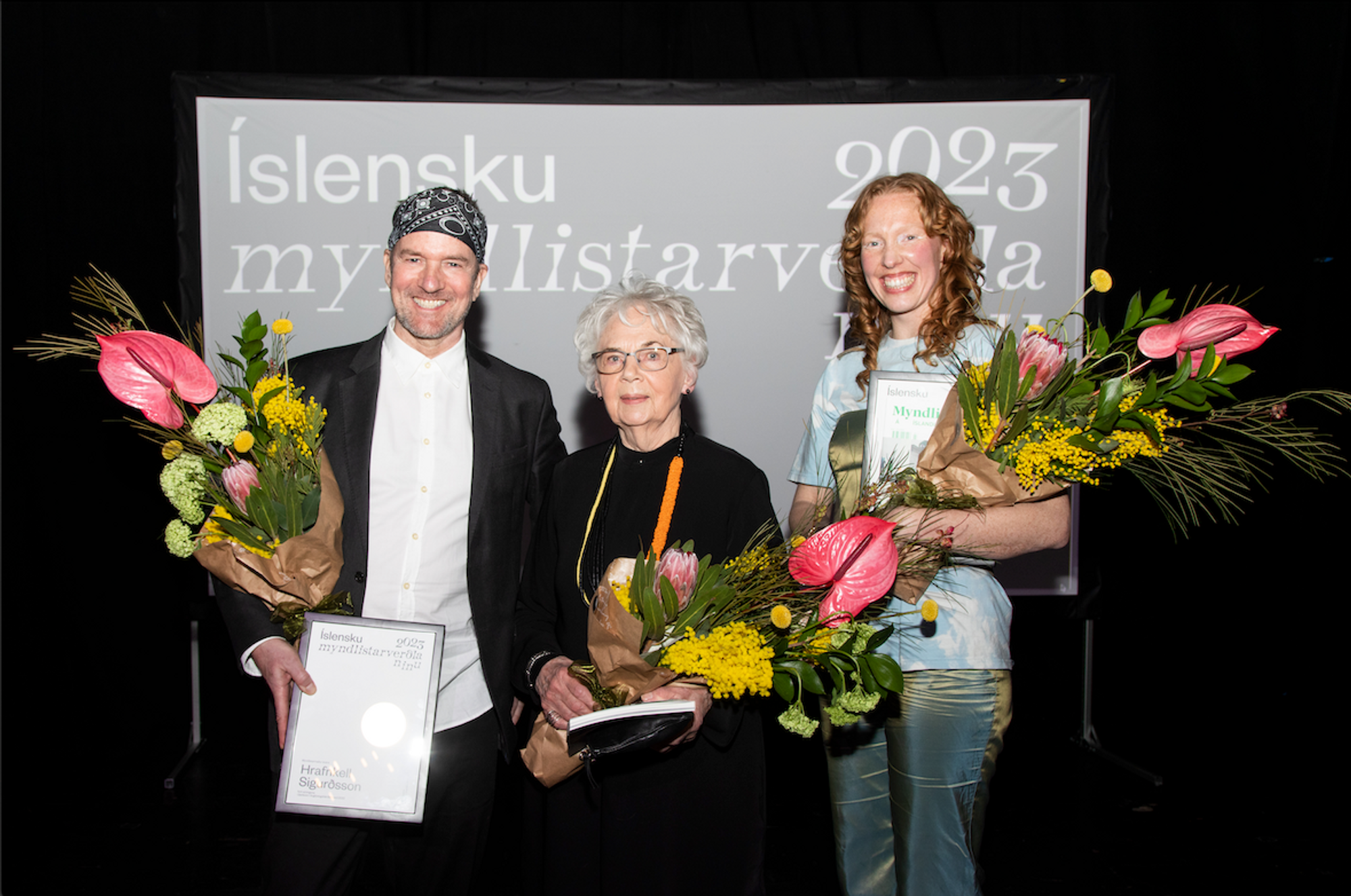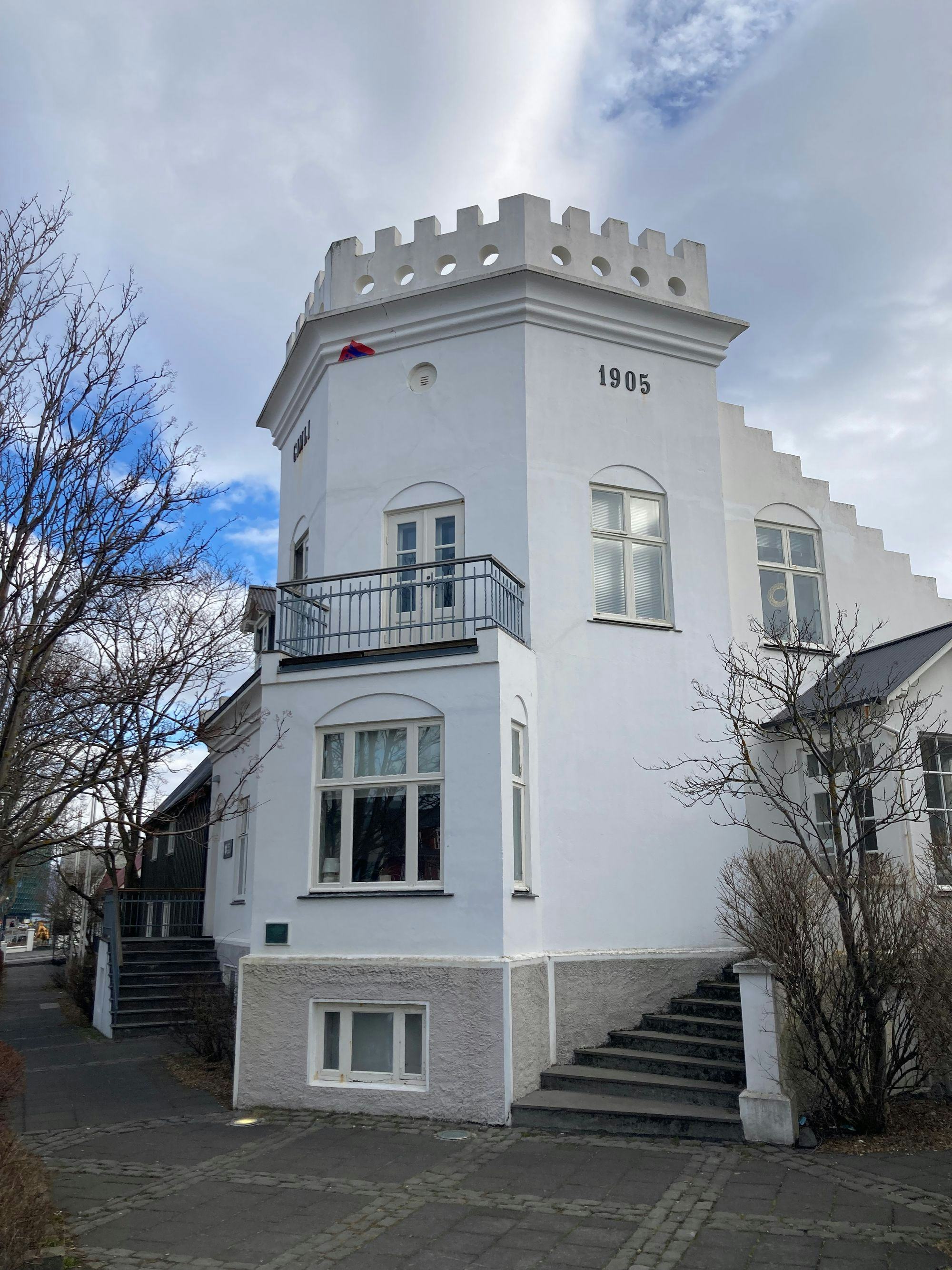Morse code, minerals and mythologies collide in Friðbjörnsdóttir´s practice
Recently Anna Júlía Friðbjörnsdóttir relocated to Berlin from Reykjavík for a one-year residency at Künstlerhaus Bethanien. The Icelandic Art Center and Künstlerhaus Bethanien have since 2020 collaborated on granting Icelandic artists the opportunity to attend the residency. Previous Icelandic Art Center residents at Künstlerhaus Bethanien are Styrmir Örn Guðmundsson and Elín Hansdóttir. The residencies are funded by the Ministry of Culture and Viljandi, an Icelandic memorial fund.
In Friðbjörnsdóttir multi-media practice, the artist juxtaposes historical and contemporary debates. She generally pairs motifs that seem to be opposites, e.g. handmade and organic notions, with mechanical and scientific materials traversing time and space.
I am inspired by various local histories and the politics of places that I have sought to combine with broader historical perspectives and references from multiple sources. I am equally interested in art history, natural sciences, anthropology and folklore.
I tend to work site-specifically and take into account the context of an exhibition or project. I try to facilitate a layer of meaning and the possibility of multiple readings. The materials I use are often perishable, making the work and installations ephemeral. I once made a sculpture for an exhibition out of tallow, which then slowly burned down over the exhibition period.
Usually, I start with a particular material and ideology that I want to work with, and then the rest falls into place. The materials I choose always have inherent qualities, often chemical elements. The inherent quality of the material always references the underpinning ideology of my artworks, thus becoming the founding block of my practice. The process can also begin with an idea or come from language, eventually leading to the material I decide to use.
One can say that my practice is research-based. However, it is not so scientific, and I would instead call it rummaging after information from all over to use in various compositions and contexts. I identify as a curious person. Sometimes I need to restrain myself from the research phase to start making. I have a tendency to over-prepare and build certain expectations before I even start creating the actual work. Everything changes and evolves when you start to work with the material and work on the presentation of the concepts, often with discoveries and exciting solutions. Experimenting with the medium is also a form of research and is something all artists do.
Anna Júlía has been in Berlin for eight months with an artist studio at Künstlerhaus Bethanien. Künstlerhaus Bethanien has 730 square meters of exhibition space and 25 artist studios and is equipped with workshops for working with iron, wood and plastic, as well as sound and film editing facilities. Anna has been busy creating new work during her stay and has yet to explore uncharted areas in her artistic practice.
I had two separate projects in mind that I wanted to develop for two different exhibitions in Berlin. I wanted to use this opportunity to make new work with the facilities that aren’t readily available at home. Another important mission is to meet new people and expand my network.
I will also use my time to explore the museums. I’ve been visiting all sorts of historical, technical and art museums. The museums here are fascinating and reflect a rich engineering history and the colonial past.
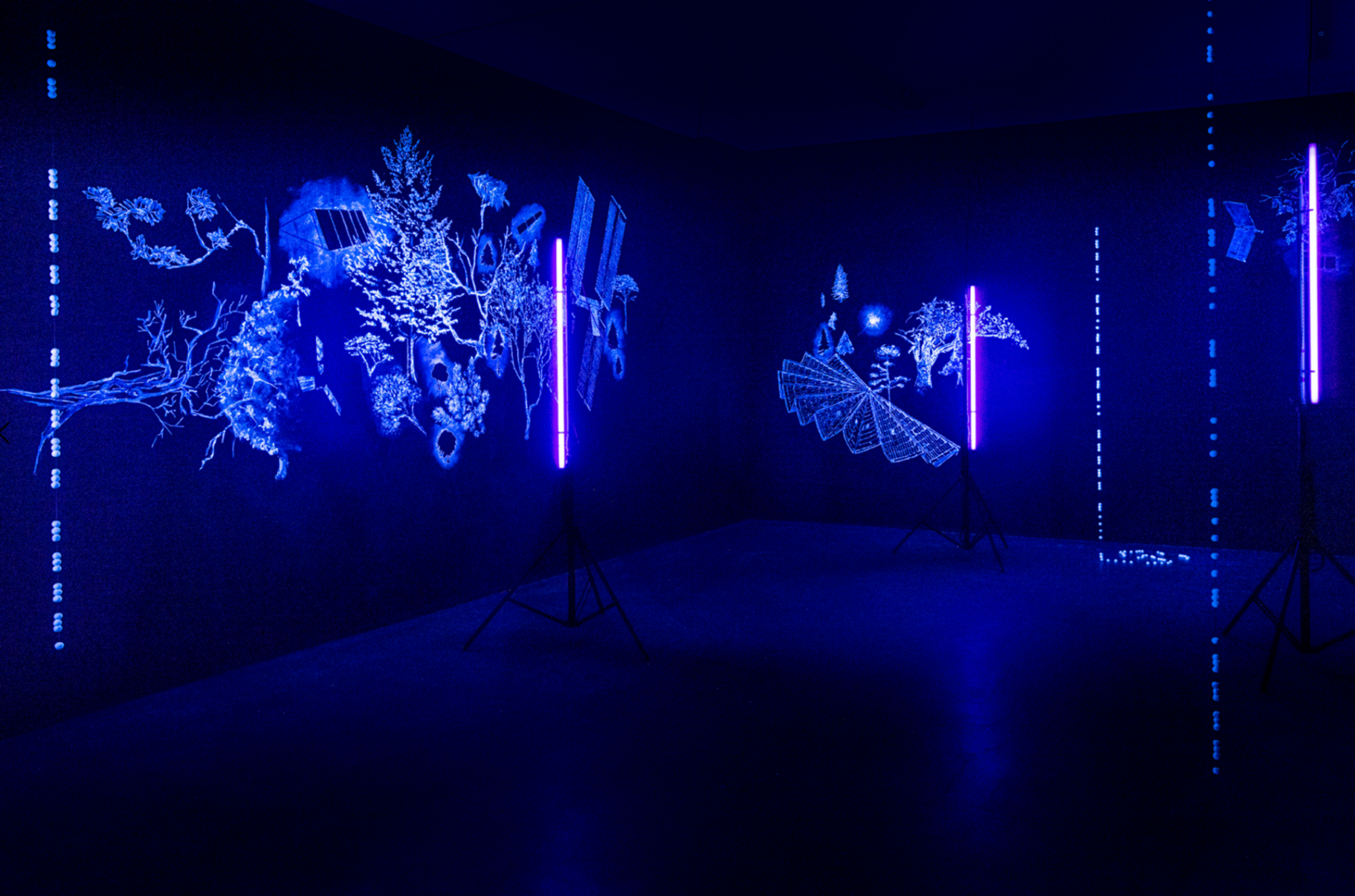
Anna Júlía Friðbjörnsdóttir: Phosphoros. Installation view. Photo: Axel Sigurðsson.
In 2021 Anna’s installation Phosphoros was in the exhibition Iðavöllur: Icelandic Art in the 21st Century at the Reykjavik Art Museum – Hafnarhús. Iðavöllur, exhibited a group of young artists considered to have been influential in the Icelandic art scene. Friðbjörnsdóttir drew inspiration from mythology, chemistry, natural phenomena and even cave paintings. Phosphoros was a new work made for the exhibition and consisted of wall drawings, beads, a soundscape and ultraviolet lighting. An installation shot of Phosphoros was the cover image for the 2nd edition of the Icelandic art magazine titled “Art in Iceland “.
I acquired bone ash from an aluminium factory in Iceland, and the installation revolves around this material. The ash has been used for centuries in working metal, ceramics and porcelain, then referred to as Bone China.
The title of the piece came from thinking about the myth of Phosphoros, the Greek mythical creature that goes under the name of Lucifer in Latin but literally, it means “bearer of light”. The same story in various cultures comes from the same astrological source, the course of Venus.
To me, the bone ash represents the mineral phosphorus. When the mineral was discovered, it was named phosphorus because it exhibits the phenomenon of luminescence, hence “bearer of light “. For instance, your teeth illuminate in ultraviolet light because they contain phosphorus. Phosphorus sustains all life; however, it is mainly used industrially in agriculture as a fertiliser. Sadly, when it is taken out of its natural cycle, it becomes extremely pollutant. So, in a larger context, it’s an example of a finite resource that’s being abused.
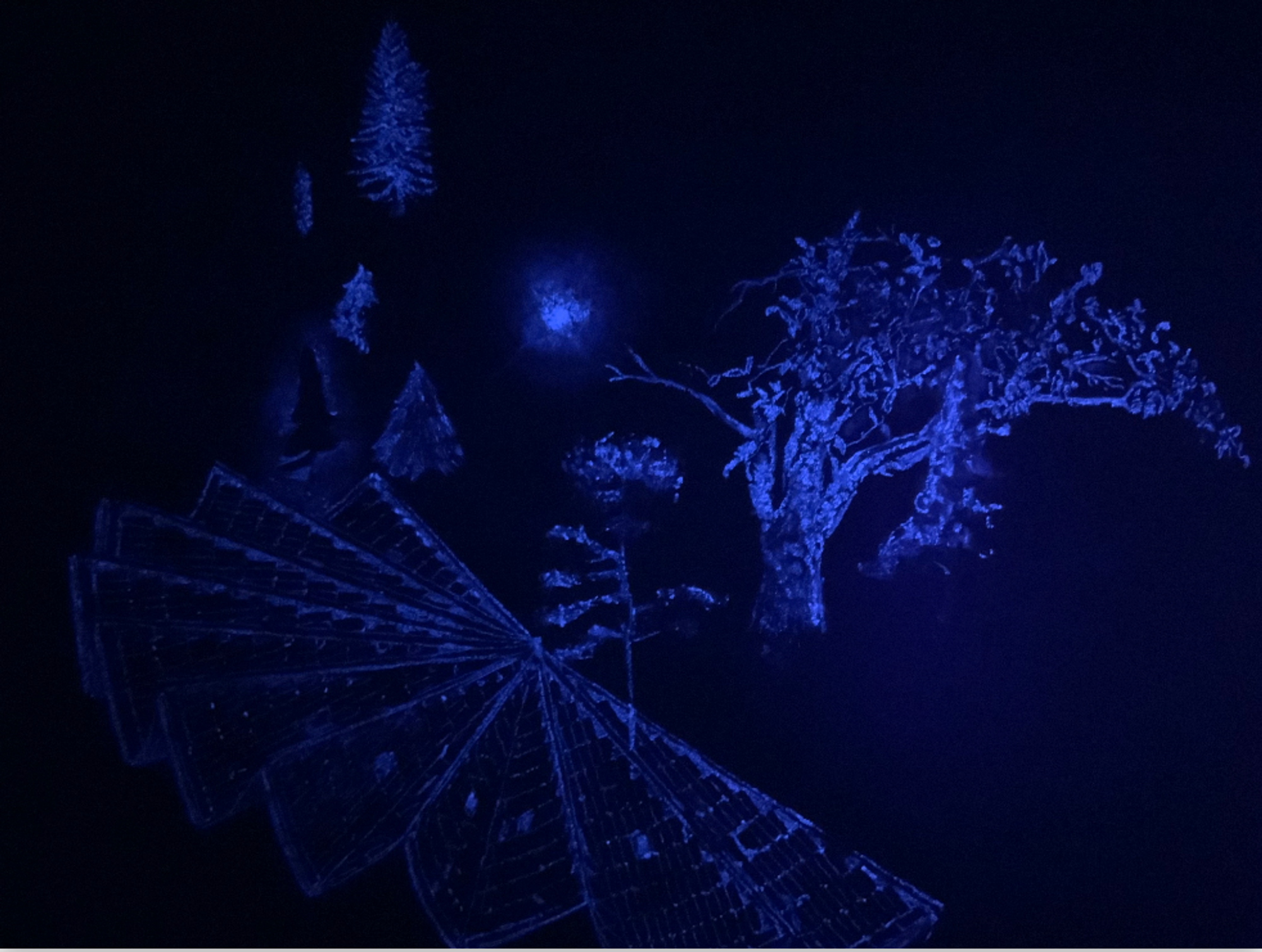
Anna Júlía Friðbjörnsdóttir: Phosphoros. Detail. Photo: Axel Sigurðsson.
The only source of light in the exhibition space of Phosphoros was blacklight. Visitors’ eyes would slowly adjust to the light, and then the wall drawings became clear. The luminous drawings seemed almost three-dimensional. Accompanying the installation was a solemn soundscape, and strings of beads hung from the ceiling to the floor at a few places.
The space I was allocated for the work was long and narrow, and I got a cave-like feeling from it, so I decided to go with it. I had been thinking of making chalk to use in wall drawings which then made me think of cave paintings. I wanted to create an atmosphere of a ritualistic scene or at least a site of an ambiguous situation.
To underline the properties of the bone ash, I decided only to use blacklight in the space to accentuate the theme of the light which runs throughout the work. The iconography of the work contains trees, solar panels of space probes and satellites. These two phenomena, organic and mechanical, produce energy from sunlight through organic or technical processes. I drew inspiration from the cave drawings in the composition of the two, making up clusters on the walls of the space.
I also used the bone ash to make beads kneaded by hand. These were then threaded onto strings and suspended from the ceiling. The rows of beads systematically form a morse code and spell out numerical data of gravity, light speed and the Kármán line; the distance from Earth to outer space.
The soundscape is a recording from NASA of Venus’s electromagnetic field, converted to sound, as there is no sound in space itself.
The installation challenges the viewer’s senses with the limited light in the space and the solemn soundscape. The overall installation has a feeling of ambiguity.
The blacklight has the practical function of making the drawings visible. But in addition, they create the illusion of a 3D effect as the different thicknesses of the chalk react differently to the light. Which I liked because it strengthened the disorientating effect of the installation, especially whilst the eyes were adjusting to the low light condition. On the other hand, the black light also creates a sort of science lab mood, insinuating that the site could be under scientific examination. In addition to this, the soundscape makes everything a little bit unsettling and uncanny.
I am thinking about our current situation and how humanity has altered some natural cycles and intervened in nature’s ecosystems. Phosphoros is referencing all of this and our overemphasis on endless growth. It’s very unclear what the setting is – are we located in the future looking at remains from the present, or is it today, or maybe just a film set? It excites me to mess with the timeline – or perhaps our perception of time, past and future, primitive and modern, and juxtaposing scientific data and decorative motifs.
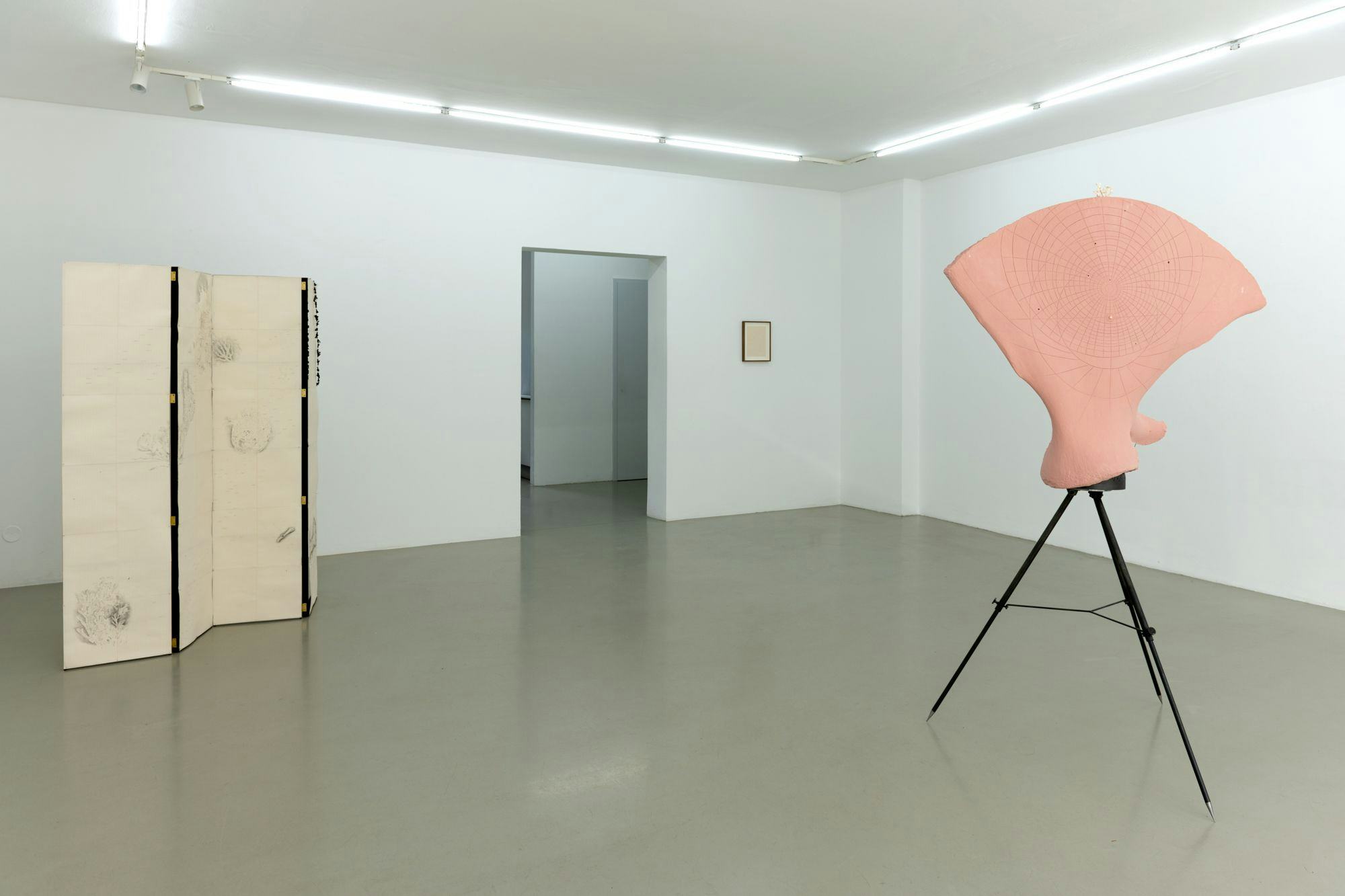
Anna Júlía Friðbjörnsdóttir: Last Season. Installation view. Photo: Ivonne Thein
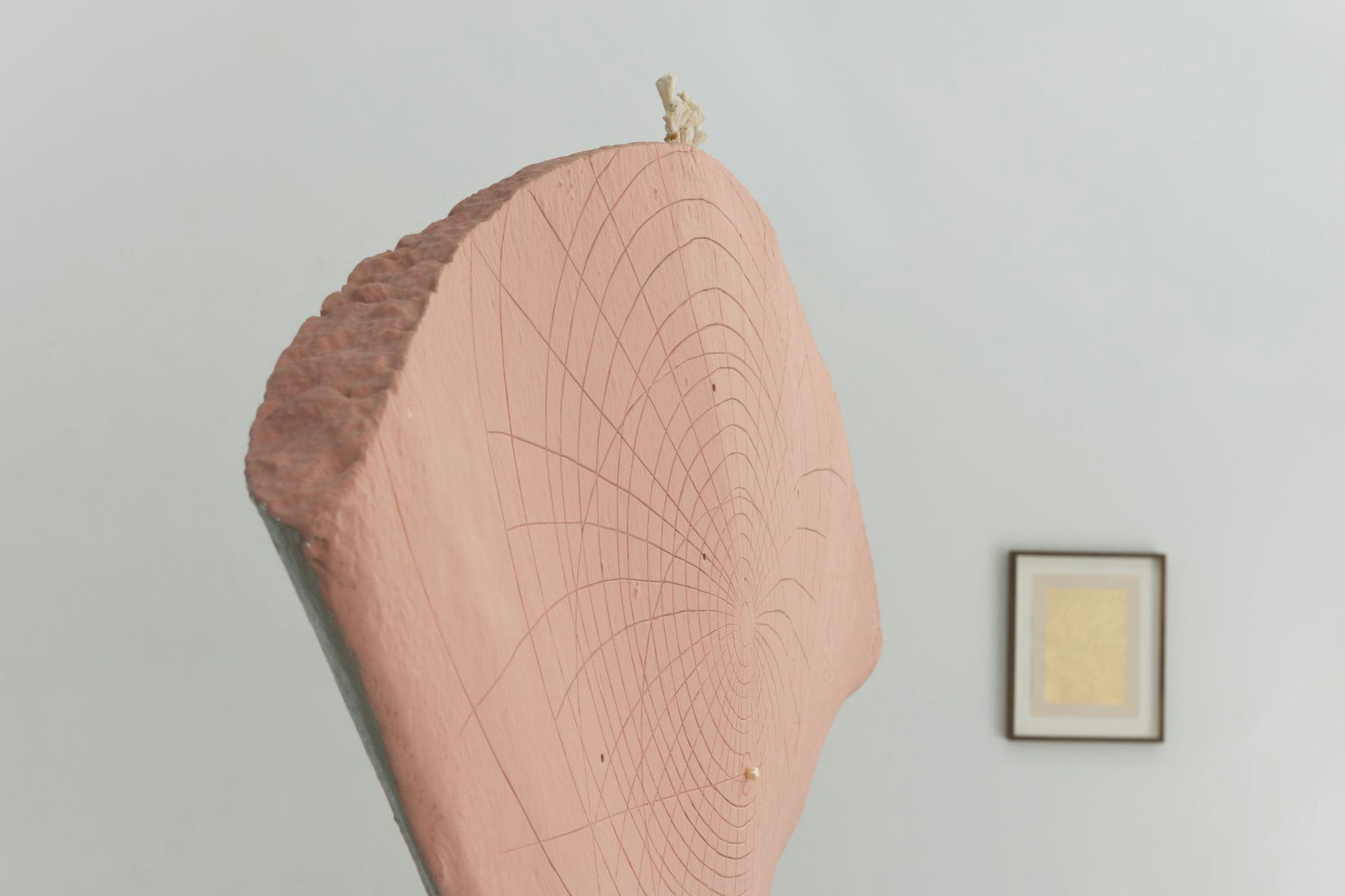
Anna Júlía Friðbjörnsdóttir: Last Season. Detail. Photo: Ivonne Thein
Recently, Anna Júlía opened her first solo exhibition abroad at Gallery Gudmundsdottir in Berlin. The exhibition titled Last Season – consisted of four sculptures and works on paper. The work’s subjects came from a vast array, from astrology to the fashion industry.
The exhibition title is a nod to the fashion industry and a pun in the context of the exhibition’s ideas. I also liked it for its apocalyptic tone. All the artworks have fashion-related titles: Pre-fall, Runway, Silhouette. I prefer to set myself a limited frame of reference when working on an exhibition. Otherwise, I’m all over the place.
I am thinking a lot about time and our perception of time. I envisioned the exhibition with two axes, a horizontal one for time and a vertical spatial axe. I suggest our navigational stargazing on the one hand and deep sea research on the other, both unexplored territories.
I’ve been preoccupied with the concepts of orientation and navigation, literally and symbolically, and where we are headed in the future as a whole. It also relates to our connection to natural cycles. In Iceland, we are still quite in tune with our environment, but our relationship with the natural environment is changing. The seasons have also changed and will probably never be like they used to be. So, all the artworks I made for Last Season are related to these concepts and concerns.
Three sculptures are based on bones of extinct or endangered animal species. Two are 3D reproductions of a rib and a shoulder blade of the North Atlantic right whale, made in 1:1 size in polyurethane, and then one is a plaster cast of a walrus tusk.
I knew of research being made by the Icelandic Museum of Natural History on the North Atlantic right whale, which is highly endangered. The museum has access to a whale skeleton, believed to have been killed in the latter half of the 19th Century on Iceland’s shores and is now preserved in Denmark. They scanned the bones and made a perfect 3D model, which I knew I wanted to use. I chose two bones, the large spatula bone and the smallest rib, and had reproductions done in Berlin. I was inspired by traditional Icelandic whale bone carvings of Christian motifs as well as the Inuit’s painted tusks with animal and hunting scenes. The standard industrial material (polyurethane) is perfect for carving and sticking ornaments into, and I also liked the odd pink colour of it.
The whale will probably go extinct in our lifetimes, leaving our ecosystem prematurely. This whale species was hunted around Iceland’s shores a few centuries ago by other nations than Iceland. Today, it is rarely seen around Iceland and is only found around North America’s coasts. The last time I checked, there were only 350 whales left. Ship traffic causes sound pollution, collisions, and whales get tangled in fishing nets. During the exhibition, we told guests how the oil extracted from the whales was used to light up Europe.
The walrus tusk cast was made from a 1300-year-old bone of an extinct species. I got permission to make a mould of an almost fossilised sample.
Anna intricately carved lines on the sculptures taken from ancient navigational instruments, adding another layer of meaning to the artworks.
The astrolabe is an ancient astronomical instrument sometimes referred to as the first computer. The device was invented by the ancient Greeks and became common in Europe during the Middle Ages. Horary quadrants are closely related to the astrolabe instrument, used similarly but have a simpler function. I carved navigational data from these tools on the bones, making the pieces act as symbolic clocks and compasses. To accentuate their instrumental qualities, I display them on custom-made steel tripods.
The sundial I made from the walrus’s tooth is based on the old cylindrical dial, also known as the “shepherd’s dial”, coined as such because shepherds had it on handy to know when to return home and keep track of time.
I used software to make my sundial for a specific latitude, for Berlin, and then I carved the drawing it made on the plaster cast. When technical instrumental data is transferred onto organic forms, it doesn’t make a functional object. The sculptures also embody opposites in materials and methods, the organic part is made by a machine, but the technical data is hand carved.
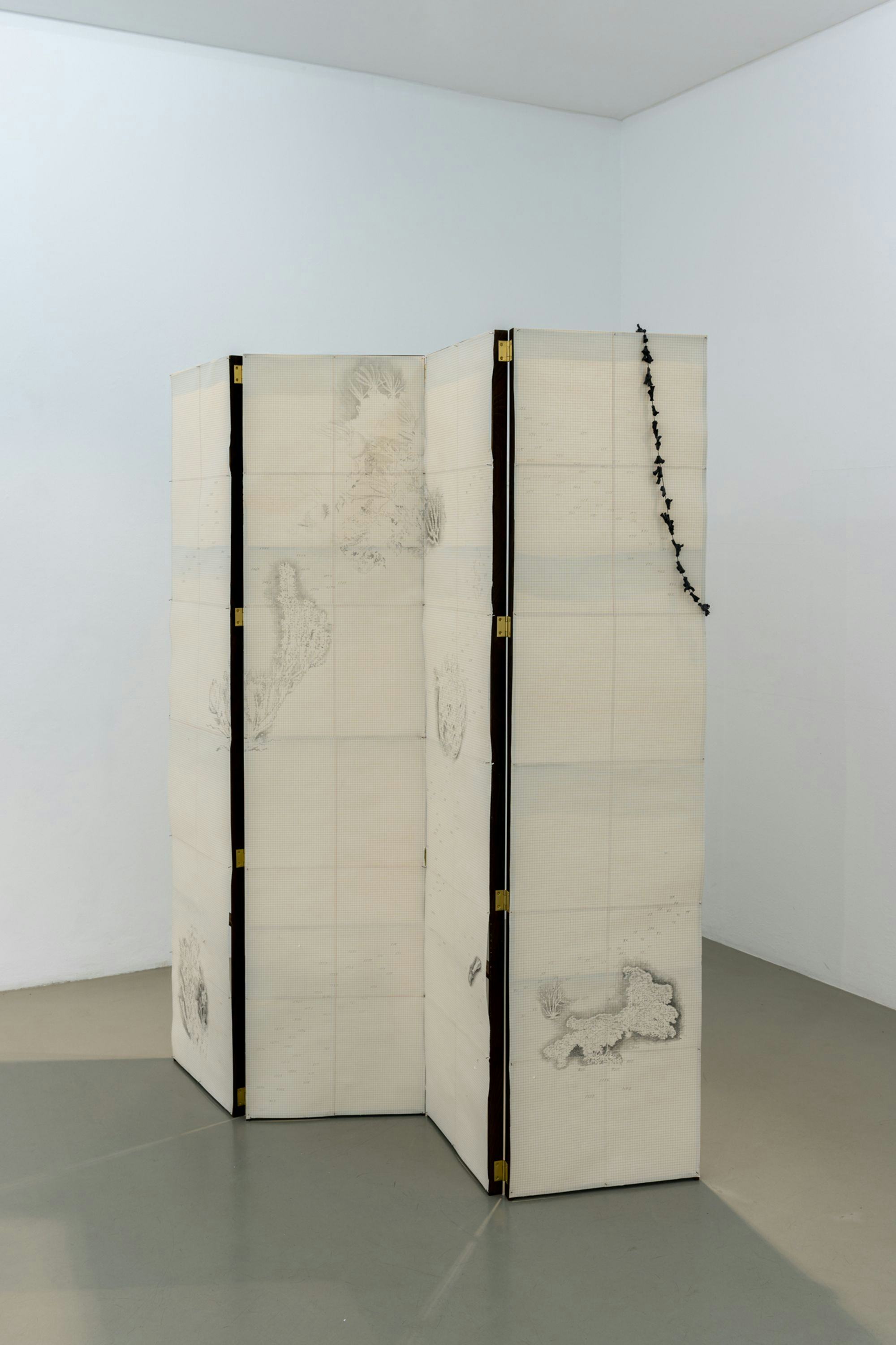
Anna Júlía Friðbjörnsdóttir: Last Season. Detail. Photo: Ivonne Thein
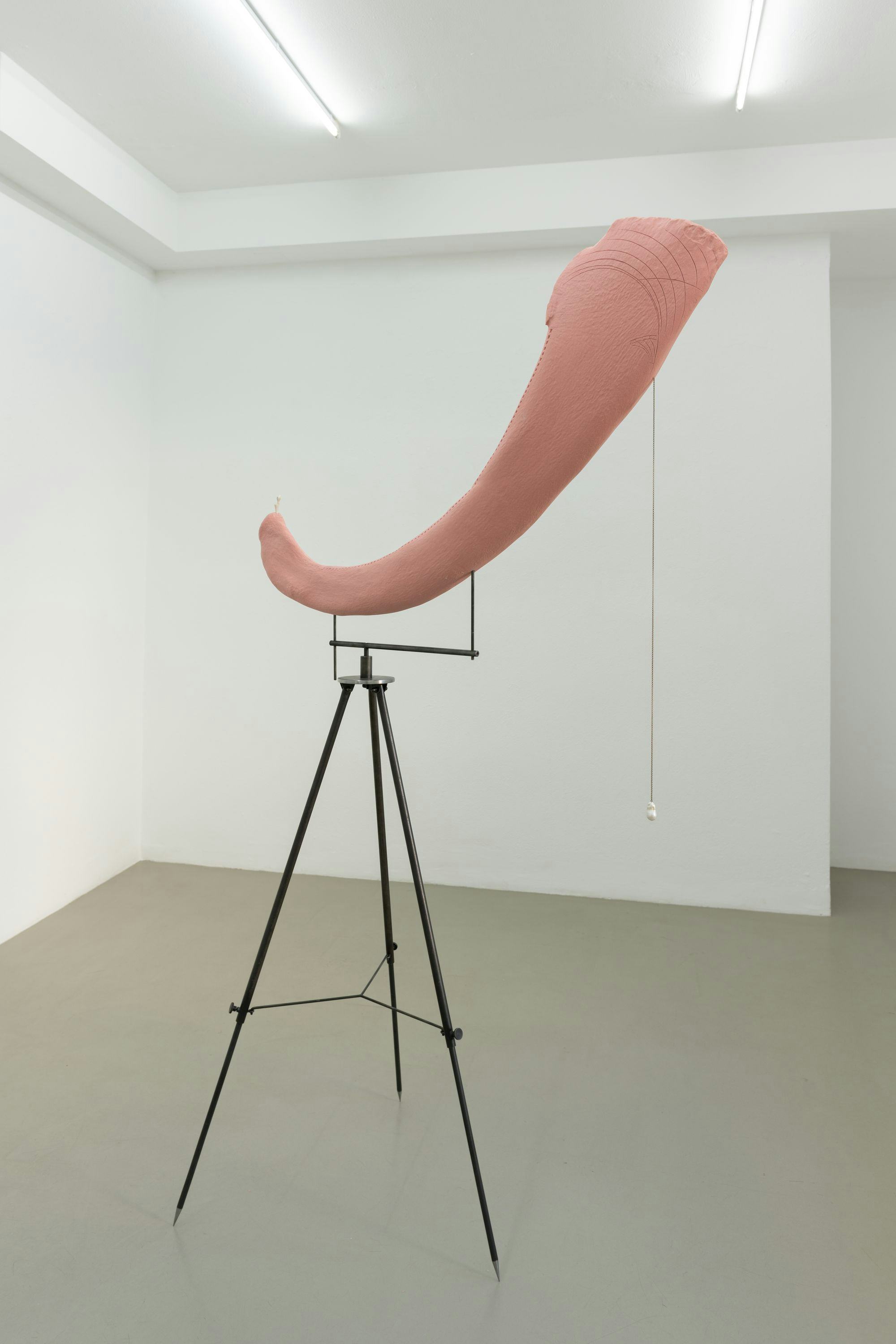
Anna Júlía Friðbjörnsdóttir: Last Season. Detail. Photo: Ivonne Thein
The title Last Season refers to something being outdated or out of fashion and directly relates to the fast-paced fashion industry. Which the titles of the sculptures also point to. Anna Júlía then mixes all of this with the Icelandic Ocean floor and coral reeves.
In Pre-Fall I used the whale’s shoulder blade as a canvas. I carved the coordinates of an astrolabe disk into it. Holes representing the most prominent celestial objects let the light through the object, making the constellation visible from the other side. A pearl at the centre of the astrolabe’s grid matches the coordinates of the Polestar, and on top, the piece is decorated with Icelandic coral, a bit like a crown. The other side is covered with aluminium foil, creating a mechanical look but also hinting towards this surface being a mirror. The shape reminded me of a dressing table mirror due to its embracing form. So, the work mixes the scientific and the personal space, function and aesthetics, both in the service of the individual.
Another piece, Silhouette, is a room divider with drawings. I drew inspiration from Japanese screen paintings that traditionally depict seasonal landscapes, I was especially drawn to monochrome ink paintings where the scene fades in and out. I attached sheets of grid paper to fit the screen. The paper has its association with mathematics and systems and speaks to the categorising and organising of nature. It makes a strong contrast when used for drawing and with the functional screen as ‘furniture’ – both being kind of wrong. I’ve used transfer paper before because of its connection to bureaucracy, but this time I chose grid paper for its link with science.
I was working from photographs from the Icelandic Marine & Freshwater Research Institute. They are mapping the ocean floor around Iceland and have found corals and many other deep-sea creatures. The scientists are campaigning for the protection of some of these areas that fishing trollers threaten. These beautiful creatures were photographed with a robotic underwater camera, and I have been lucky enough to use these photographs and also some of the natural corals. I made casts from the coral, created a black chain (black to continue the shadow play), and hung it on the screen. Again, the piece juxtaposes the realm of science and personal space. Digits in the drawings are taken from oceanic navigational maps of the sea around Iceland. Finally, I cut open some of the squares in the grids, making a covert astrological map visible by the light when the piece is backlit.
Anna will finish her one-year residency this spring with a solo exhibition at Künstlerhaus Bethanien. In the meantime, she will work further on her research whilst still getting acquainted with the Berlin art scene.
Anna Júlía Friðbjörnsdóttir‘s works seek to merge local histories and the politics of places with broader historical perspectives and layered references from multiple sources. As research forms a large part of her practice, she often works with institutions and specialists in various fields. Coincidentally, her choice of materials stems from their inherent qualities and varied associations, such as glass beads, copper, carbon paper, bone ash and tallow. Friðbjörnsdóttir‘s work has been shown in the Reykjavik Art Museum; Gerdarsafn – Kopavogur Art Museum, and at Hafnarborg Hafnarfjordur Centre for Culture and Fine Arts, Iceland.
